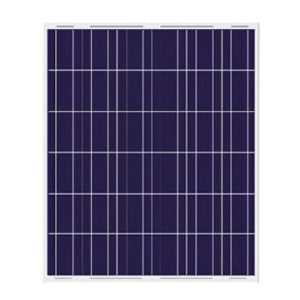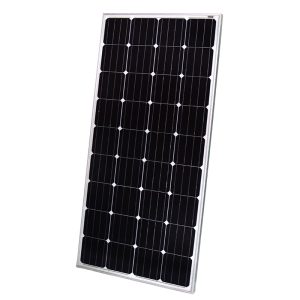As a business owner looking to reduce energy costs and environmental impact, installing a 33 kilowatt (kW) solar system is an excellent option to consider. With the ability to generate a significant amount of clean, renewable power, 33kW systems offer commercial and industrial facilities major savings and sustainability benefits. This article provides a comprehensive overview of 33kW solar systems – from how they work to costs, incentives, and ideal applications.
An Introduction to 33kW Solar Energy Systems
A 33kW solar system refers to an array of photovoltaic solar panels and complementary equipment sized to produce 33,000 watts of electricity under peak sun conditions. To put this capacity into perspective, 33kW is enough to fully power multiple average-sized homes simultaneously.
For commercial sites like warehouses, small factories, office buildings and retail stores, a solar system of this size can cover a decent portion of the facility’s electricity usage. Based on the building’s actual demand and available installation space, a 33kW system may realistically supply 20% to 40% of total energy needs.
How 33kW Solar Energy Systems Work
Solar panels contain photovoltaic cells made from silicon that directly convert sunlight into DC (direct current) electricity. The DC power flows into inverters that convert it into usable AC (alternating current) electricity to meet a building’s needs.
Any excess solar energy not immediately used gets fed back into the local utility grid. This enables the facility to garner energy bill credits under net metering policies. When grid power is needed at night or during very cloudy weather, the building simply draws electricity from the grid as usual.
What Makes Up a 33kW Solar Energy System
While solar panel arrays are the most visible components of these systems, they require other equipment to properly operate, monitor performance, and integrate with the utility grid. Key elements of 33kW solar energy setups include:
Solar Modules
- 115 x 285W panels or similar alternative configurations
- Total 33,000W DC power generation capacity
- Converts sunlight into usable electricity
Racking
- Sturdy aluminum and steel structures
- Securely anchor panels at proper tilt angle
Inverters
- Usually central or string inverters for medium systems
- Converts DC solar power into AC grid electricity
Monitoring Hardware
- Tracks real-time solar production data
- Identifies any system issues needing attention
Disconnects and Overcurrent Devices
- Safely shut down flow of electricity when needed
- Prevent risk of fires from electric faults
Weather Station
- Monitors on-site weather to correlate with energy production
Energy Meter
- Measures flow of solar electricity for net metering credits
Mounting Hardware, Wiring and Conduit
- Creates solid connections between all equipment
Proper design, permitting, installation, and activation of all these components is critical to realizing the potential of a 33kW solar system.
What Does a 33kW Solar Energy System Cost?
The costs of solar systems are measured in dollars per watt, which encompasses all hardware, labor, permitting and additional expenses. Nationwide, average solar panel system pricing is $2.77 per watt for systems under 10 kilowatts and around $2.20 per watt for larger commercial projects like this according to EnergySage.
Based on these benchmarks, a 33kW solar system generally ranges from $38,000 to $57,800 after claiming the current federal solar tax credit. State and local incentives can also offset roughly $5,000 to $10,000 in additional costs.
With incentives factored in, payback periods for commercial solar investments of this size average 4 to 7 years. The system then continues producing free electricity for another 20+ years.
Solar Leases and PPAs Offer Low Upfront Costs
For companies wanting to go solar with little to no money down, solar leases and power purchase agreements (PPAs) are excellent options. Under a solar PPA, you pay a locked-in rate for the system’s electrical output across 20 years or longer. This rate is lower than what you currently pay your utility – yielding immediate savings.
Solar leases are similar except you pay a fixed monthly fee to essentially “rent” the system rather than buying electricity from it. In both cases, a solar developer owns and operates the equipment so your business can utilize clean energy with no installation costs.
Key Benefits and Applications of 33kW Solar Systems
Installing a 33kW solar energy system offers the following advantages:
Lower and More Predictable Energy Bills
- Save 20% to 40% on electricity costs
- Fixed pricing through PPAs hedge against utility rate hikes
Improved Sustainability and Public Image
- Shrink carbon footprint by up to 88,000 lbs CO2 annually
- Achieve environmental and social responsibility goals
Increased Property Value
- Higher building resale value compared to non-solar facilities
Enhanced Grid Resilience
- Reduces strain on local utilities during periods of peak demand
Federal and State Incentives
- Tax credits and additional savings opportunities
For commercial facilities like warehouses, small factories, office buildings and retail stores with available rooftop or ground space, 33kW solar systems are ideal. Applications include:
- Warehouses
- Manufacturing Facilities
- Corporate Campuses
- Schools and Universities
- Shopping Centers
- Hotels and Hospitality Businesses
- Apartment Buildings
- Places of Worship
- Municipal Buildings
With smart solar incentives and financing plans, transitioning these properties to solar energy is now very feasible.
Start Your Solar Journey Today
Companies across America are embracing solar power to take control of energy expenses, demonstrate environmental leadership, and future-proof their organizations. As an established solar panel manufacturer and supplier since 2010, Solar Exporters offers custom clean energy solutions scaled to your specific needs. Contact us for a free solar consultation and project quote.



